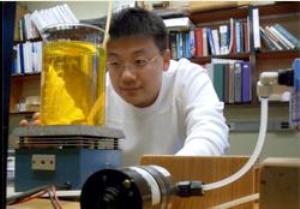A research paper published in the June issue of Carbon Management journal provides an in-depth study on forest management and the use of wood in green house gas emissions.
The paper is authored by Bruce Lippke, professor emeritus of forests resources at the University of Washington and co-authored by researchers from the Mid Sweden University, University of Washington and the U.S. Forest Service. The research reports that instead of keeping the wood to grow in forests for hundreds of years if it is regularly harvested and used in place of concrete or steel that consumes more fossil fuel during their manufacture, multifold level of carbon dioxide can be removed from the atmosphere.
 Bioresource Science Research Lab at the University
Bioresource Science Research Lab at the University
The analysis has identified a number of possibilities for the use of wood to replace concrete and iron products that utilize fossil fuel resulting in one-way generation of carbon dioxide. According to Lippke, sustainably managed forests practically offer two-way flow of carbon dioxide, they absorb the carbon dioxide during their growth and when the tree dies, decays, fall back or burn the carbon goes back to the atmosphere, thus remaining carbon neutral.
They suggest for quicker growth of trees and crop the wood before the trees become less active and utilize them in place of steel or concrete or use as woody biomass to manufacture biofuels to replace fossil fuels. The authors are not suggesting harvest of trees for all the forests and advise it only for those forests that can stop the accumulation of carbon dioxide in the atmosphere. They said that though the older forests slow down in the absorption of carbon dioxide they continue to offer a number of ecological benefits.
The University of Washington along with 13 more institutions has been working on the life cycle study of wood products also known as cradle-to-cradle analysis for over 15 years. It used the services of Consortium for Research on Renewable Industrial Materials at the University and found some of the wood products utilized in normal housing or industrial constructions served for around 80 years or more.
The researchers utilized the life cycle analysis to compare the carbon foot print and found that the use of engineered wood joists weighing around one ton in place of steel floor joists approximately cuts down around 10 t of carbon dioxide. In another example, the use of wood flooring in place of concrete slab flooring brought down the carbon dioxide level to the tune of 3.5 t for every ton of wood utilized.